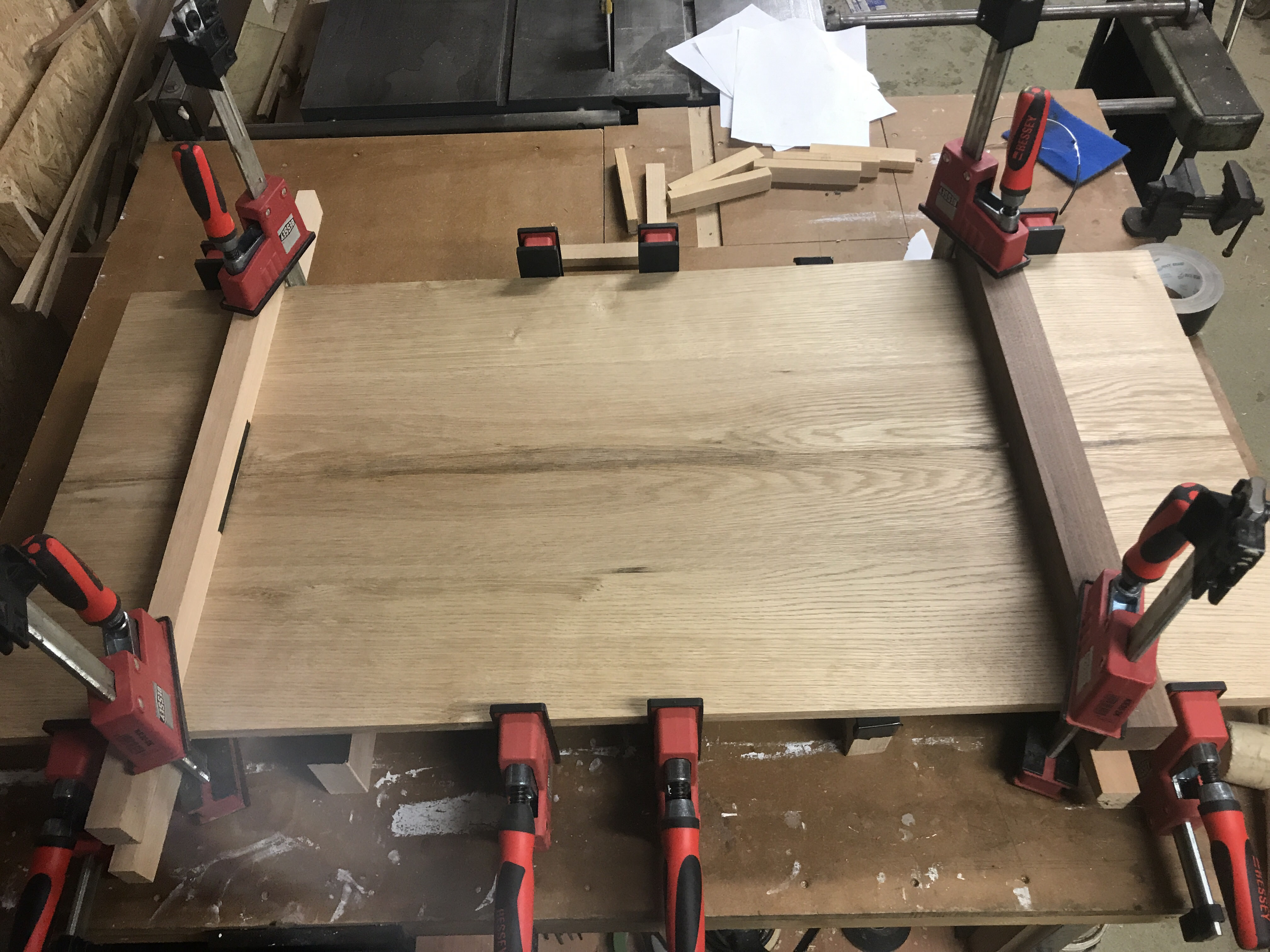Jacob
What goes around comes around.
I'd recommend more than a thick bead of glue. It doesn't always spread as much as you'd expect even under pressure. I'd cover both faces 100%. Palette knives are good - easy to clean even when glue gone hard.





One method is to cut the joints so that there's excess space somewhere in there to act as glue reservoirs. Over-deep mortises provide this, as does undercutting the shoulders if there are any. Not sure why this isn't more often done but drilling a hole through the tenon would as well, obviously this reduces the glue surface area a bit but not enough to be important I would have thought.JSW":54t6acci said:Which beggars the question how exactly DO you avoid glue smears around apron/leg joints, or more to the point M&T's?
Worst time to find it! You probably know this already but dampening the wood around the joint ahead of time will preview any glue spots that still need to be dealt with.JSW":54t6acci said:I've made tables with M&T's in the past where I thought I'd cleaned off all the excess glue, only to find out once a finish is applied, wasn't the case at all. Very frustrating!
ED65":3683sjhr said:I've found this to be especially useful on open-grained woods like oak because it gets into the recesses the way a damp cloth might not.
Pete Maddex":eq3qsn8g said:I usually leave the squeeze out and cut/scrape it off when it goes rubbery.
Pete
Warm water with washing up liquid and a toothbrush, followed by T towel. Has to be done promptly before it starts going off and quickly to avoid water soaking in.JSW":11yy50aq said:ED65":11yy50aq said:I've found this to be especially useful on open-grained woods like oak because it gets into the recesses the way a damp cloth might not.
Yes that appears to be the problem more often than not. My usual method is to use an angled scraper drawn down the grain to remove the bulk of the squeeze-out, then rags dampened in warm water to get rid of any residue, the glue gets into the grain though, and while I 'think' I've removed it all, in reality there's still a trace of the glue left behind.
I have an L shaped computer desk to make soon, probably on a M&T framework, will be more thorough after reading the comments here, Thanks again!

Enter your email address to join: